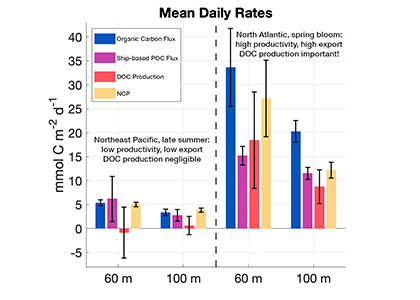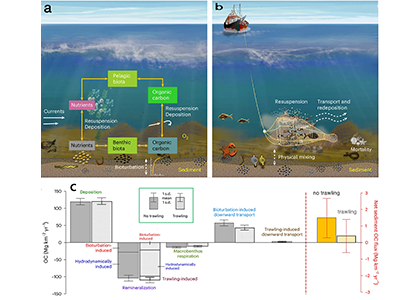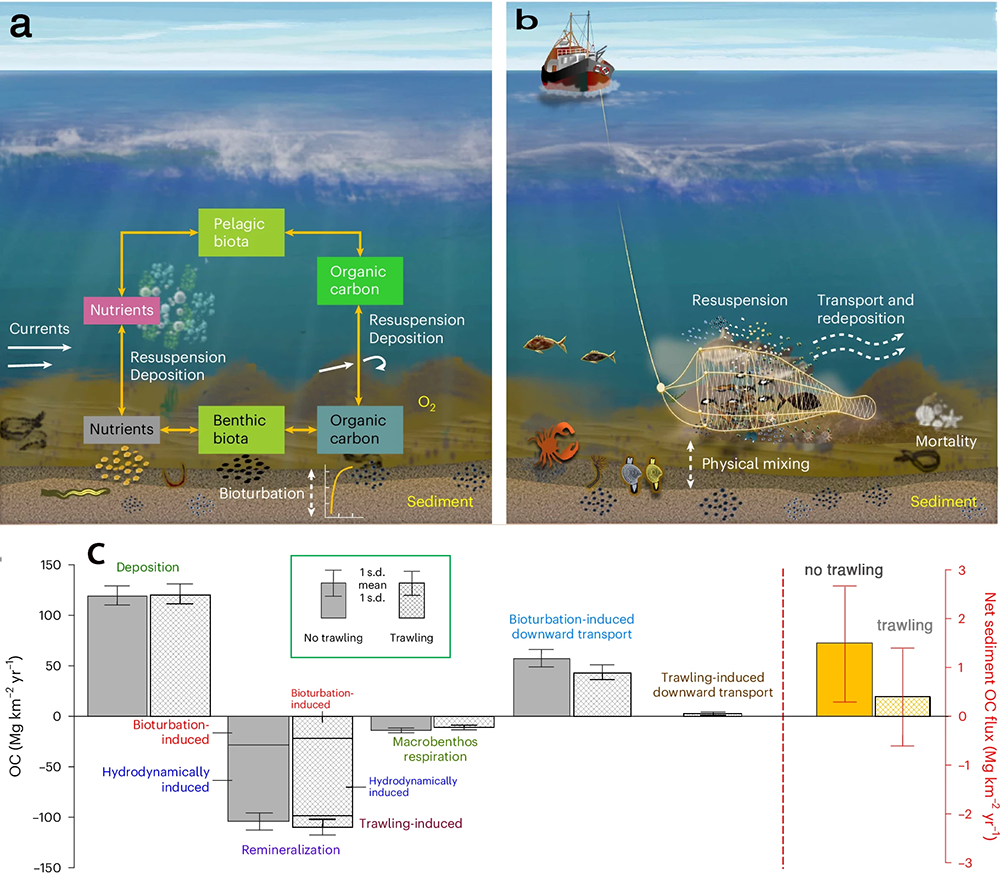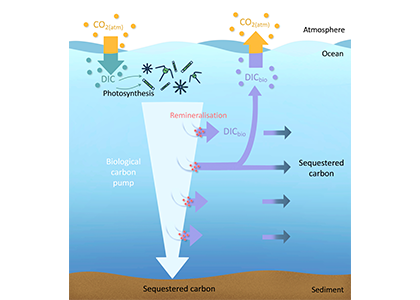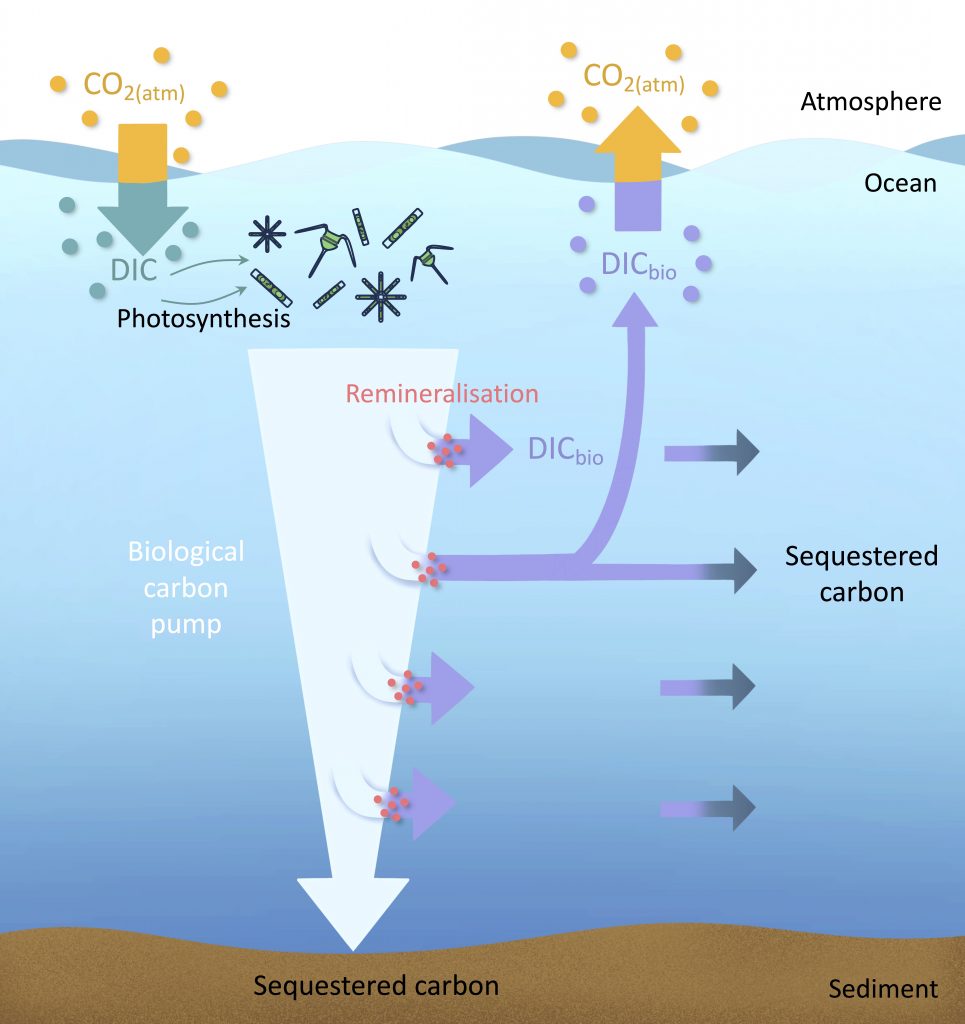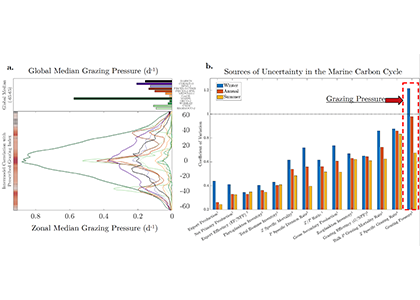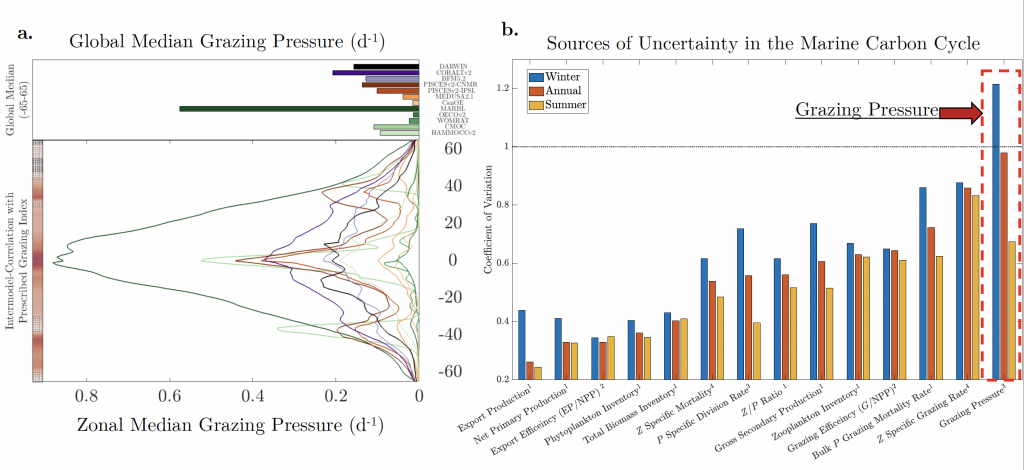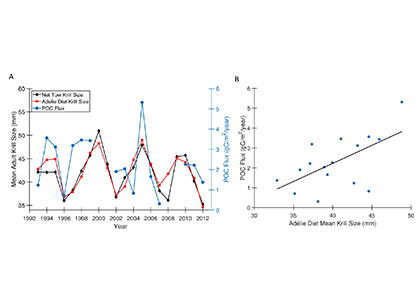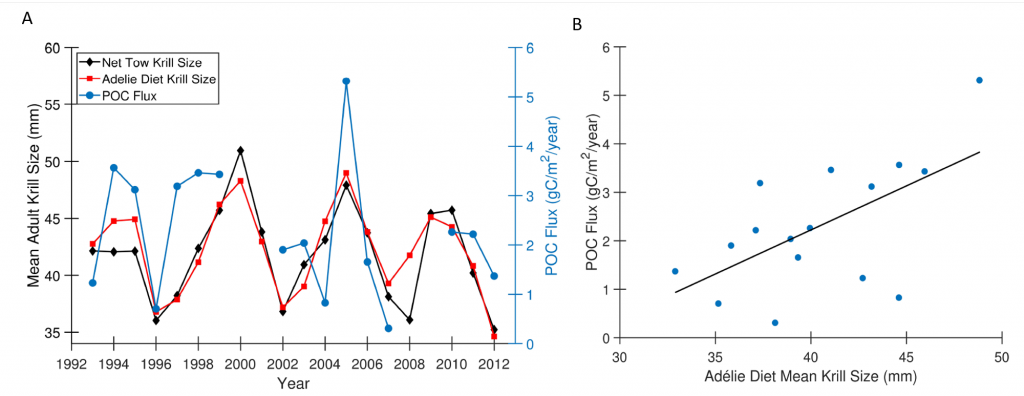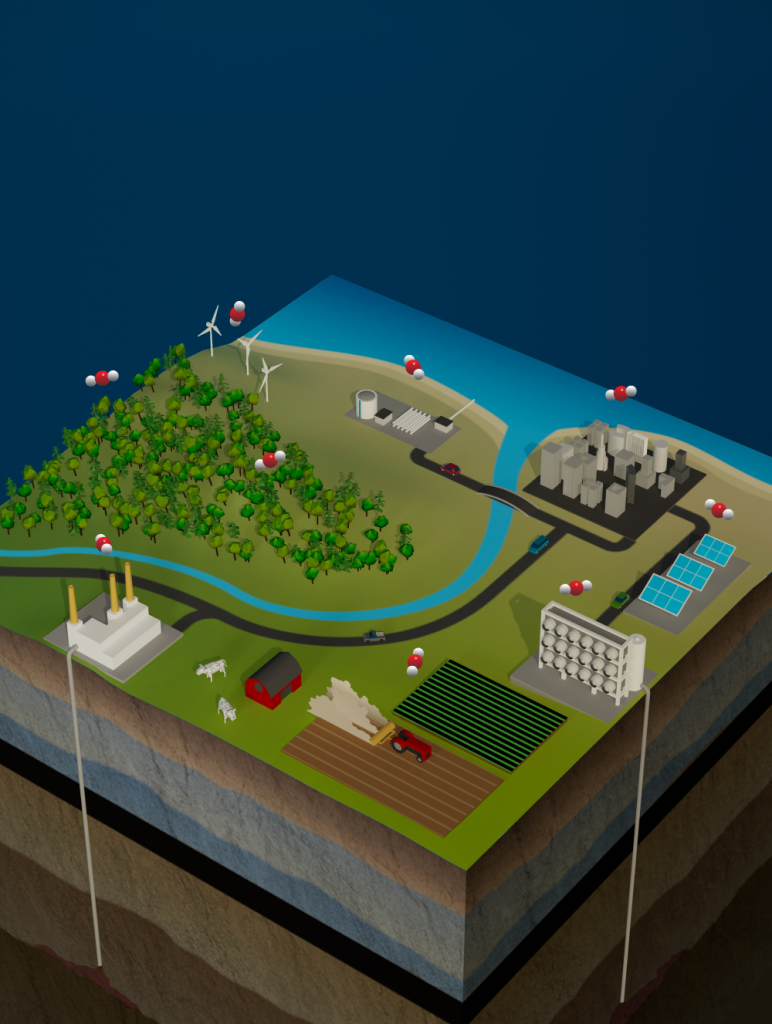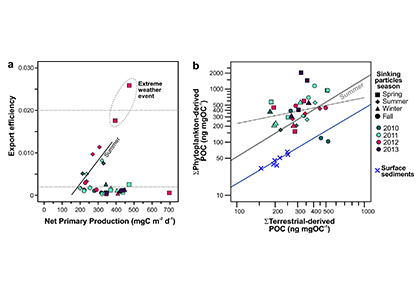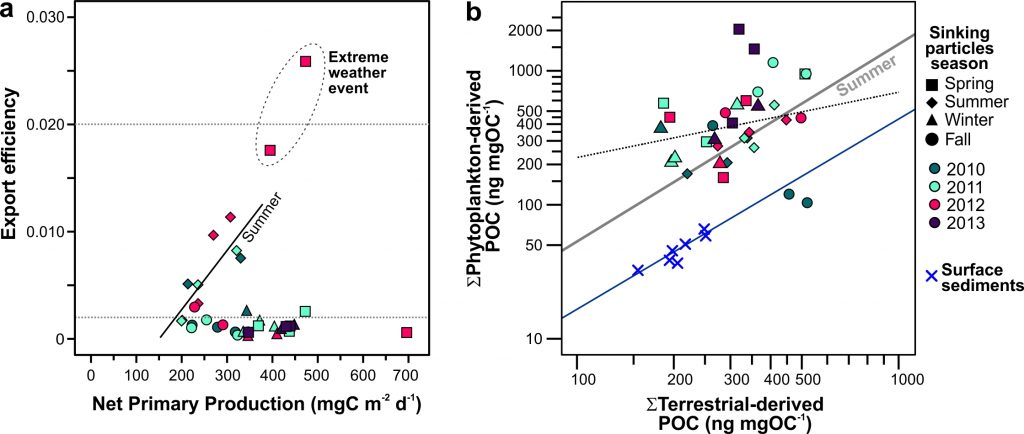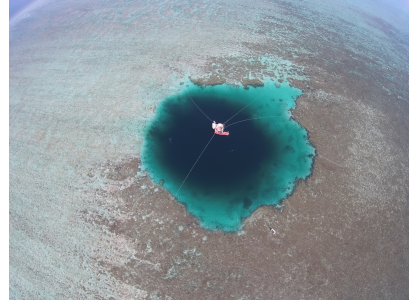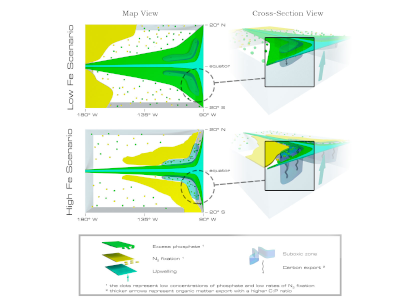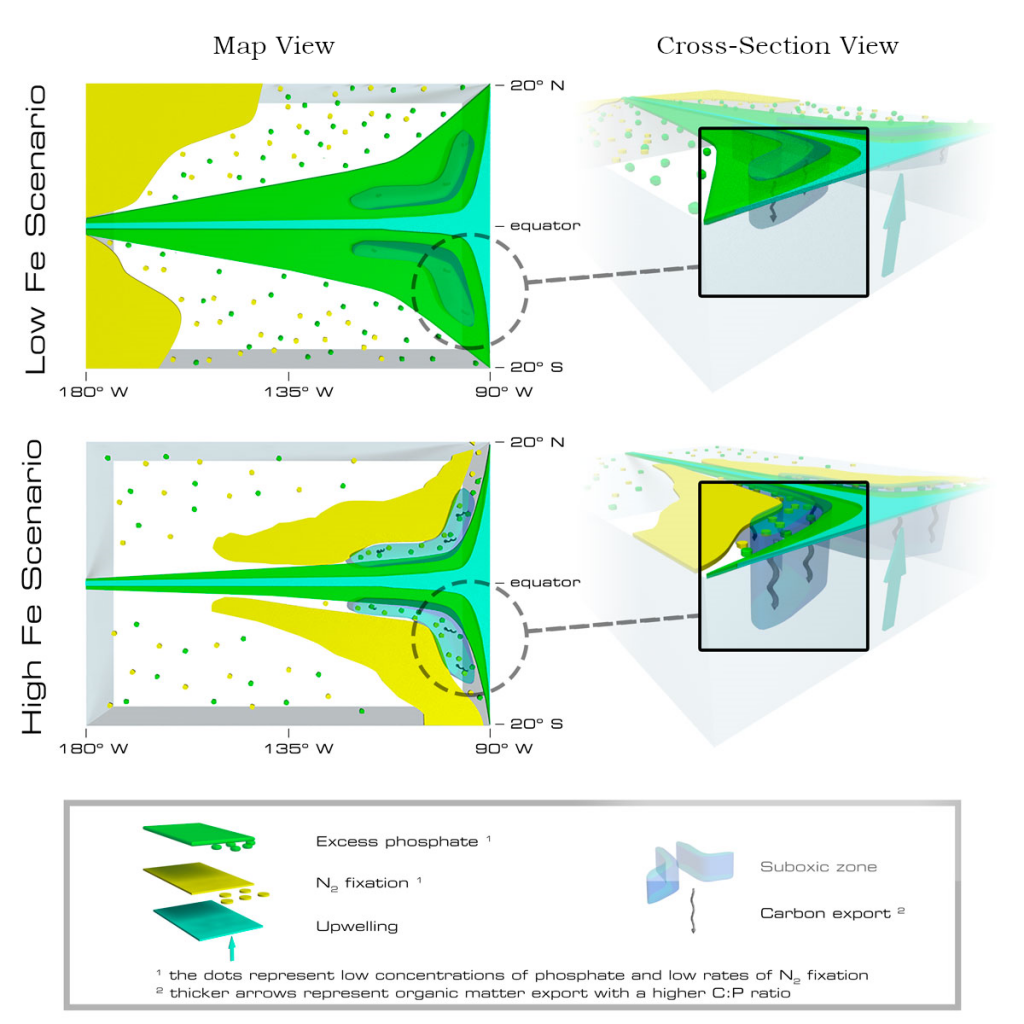The ocean’s biological carbon pump (BCP) plays a crucial role in regulating Earth’s climate. But how efficiently does it transport carbon to the deep? It has been difficult to answer this question because observations are sparse, labor-intensive, and the uncertainties of the BCP’s magnitude, which are nearly equivalent to human emissions. Fortunately, autonomous vehicles unlock our ability to observe the upper ocean in three dimensions, garner a greater spatial and temporal range than a research vessel and, unlike a satellite, enable us to see into the deep.
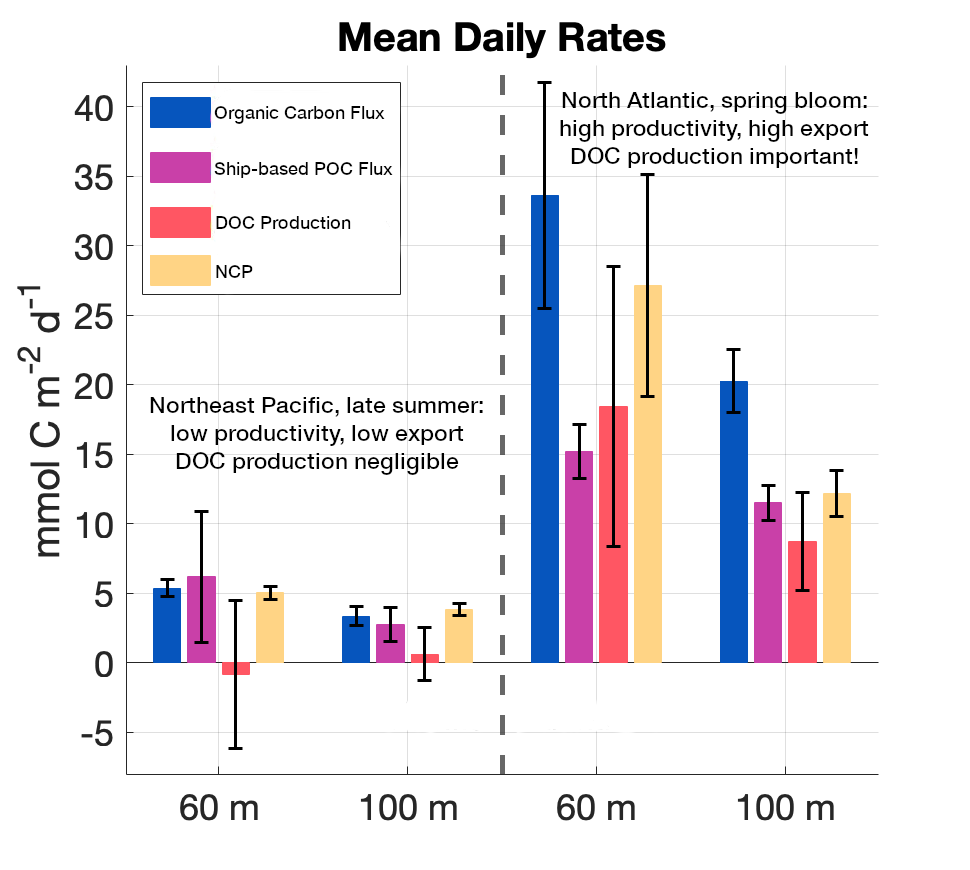
Figure caption: This figure compares mean daily organic carbon flux (blue bars) with ship-based particulate organic carbon (POC) flux (purple bars) to show the different export regimes at 60 and 100 m depth at each study site (left panel: the subpolar northeast Pacific late summer; right panel: North Atlantic spring bloom. The inferred net DOC production (orange bars) was calculated as the difference between the organic carbon flux and the ship-based POC. At times, net community production (NCP, yellow bars) is smaller than the export terms, which suggests a contribution from earlier productivity to export that is consistent with the cruise period beginning on the tail end of a previous bloom. The error bars depict the 95% confidence interval.
A new paper in Limnology & Oceanography leverages these vehicles to autonomously characterize the BCP in two dramatically diverse carbon export regimes. The results reveal strong variability in carbon export efficiency, and further comparison with ship-based data informed the transport pathways. At the lower productivity site, nearly all of the carbon fixed by phytoplankton was routed into sinking particulate organic carbon, while at the highly productive site, nearly half was diverted to dissolved organic carbon. These insights refine our understanding of carbon transport processes and highlight the strength of multiple observational approaches used in tandem. This work is part of the NASA-led EXport Processes in the Ocean from RemoTe Sensing (EXPORTS) program, that ultimately seeks to reduce the uncertainty in the global BCP through improved remote sensing algorithms.
Why does this matter? With climate change mitigation at the forefront of global policy, improving our understanding of the marine carbon cycle is essential. By providing continuous, high-resolution observations, autonomous platforms offer critical data to inform climate predictions, carbon sequestration strategies, and ocean conservation efforts.
Authors
Shawnee Traylor (MIT-WHOI Joint Program)
David P. Nicholson (Woods Hole Oceanographic Inst.)
Samantha J. Clevenger (MIT-WHOI Joint Program)
Ken O. Buesseler (Woods Hole Oceanographic Inst.)
Eric D’Asaro (Univ Washington)
Craig M. Lee (Univ Washington)

